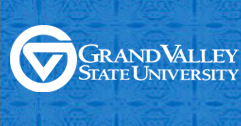Educating Newcomer Refugee Students: A Training for Classroom Teachers
Location
Hager-Lubbers Exhibition Hall
Description
PURPOSE: Hundreds of newcomer refugee students enroll in West Michigan schools each year. Subsequently, they are placed into mainstream classrooms with teachers who may be unprepared for the difficulties they will encounter. While a lack of English proficiency is a challenge, refugee students and their families additionally face a plethora of other obstacles ranging from acculturation to emotional struggles resulting from past trauma. This project provides a comprehensive professional training for teachers that will better prepare them to meet the needs of newly arrived refugee students. PROCEDURES: A critical analysis of current research on the newcomer refugee experience in the classroom sets the foundation from which the training was derived. Following this analysis, a detailed program of professional development is presented. OUTCOME: The completed project consists of segments of presentation and collaboration among attendees. Participants will gain a deeper understanding of the language acquisition process, cultural and emotional needs of refugee students, and specific ways they can enhance the classroom experience for newly arrived refugee students. IMPACT: This project offers a valuable contribution to the education community. Teachers who have had inadequate training on how to best welcome newcomer refugee students into their classroom will be given the chance to further understand how to most successfully educate such students. Because the components of this project can be adapted to the specific needs of participants, it can be used in numerous circumstances within the professional education community. The implementation of this project will improve the education experience for newcomer refugee students.
Educating Newcomer Refugee Students: A Training for Classroom Teachers
Hager-Lubbers Exhibition Hall
PURPOSE: Hundreds of newcomer refugee students enroll in West Michigan schools each year. Subsequently, they are placed into mainstream classrooms with teachers who may be unprepared for the difficulties they will encounter. While a lack of English proficiency is a challenge, refugee students and their families additionally face a plethora of other obstacles ranging from acculturation to emotional struggles resulting from past trauma. This project provides a comprehensive professional training for teachers that will better prepare them to meet the needs of newly arrived refugee students. PROCEDURES: A critical analysis of current research on the newcomer refugee experience in the classroom sets the foundation from which the training was derived. Following this analysis, a detailed program of professional development is presented. OUTCOME: The completed project consists of segments of presentation and collaboration among attendees. Participants will gain a deeper understanding of the language acquisition process, cultural and emotional needs of refugee students, and specific ways they can enhance the classroom experience for newly arrived refugee students. IMPACT: This project offers a valuable contribution to the education community. Teachers who have had inadequate training on how to best welcome newcomer refugee students into their classroom will be given the chance to further understand how to most successfully educate such students. Because the components of this project can be adapted to the specific needs of participants, it can be used in numerous circumstances within the professional education community. The implementation of this project will improve the education experience for newcomer refugee students.
